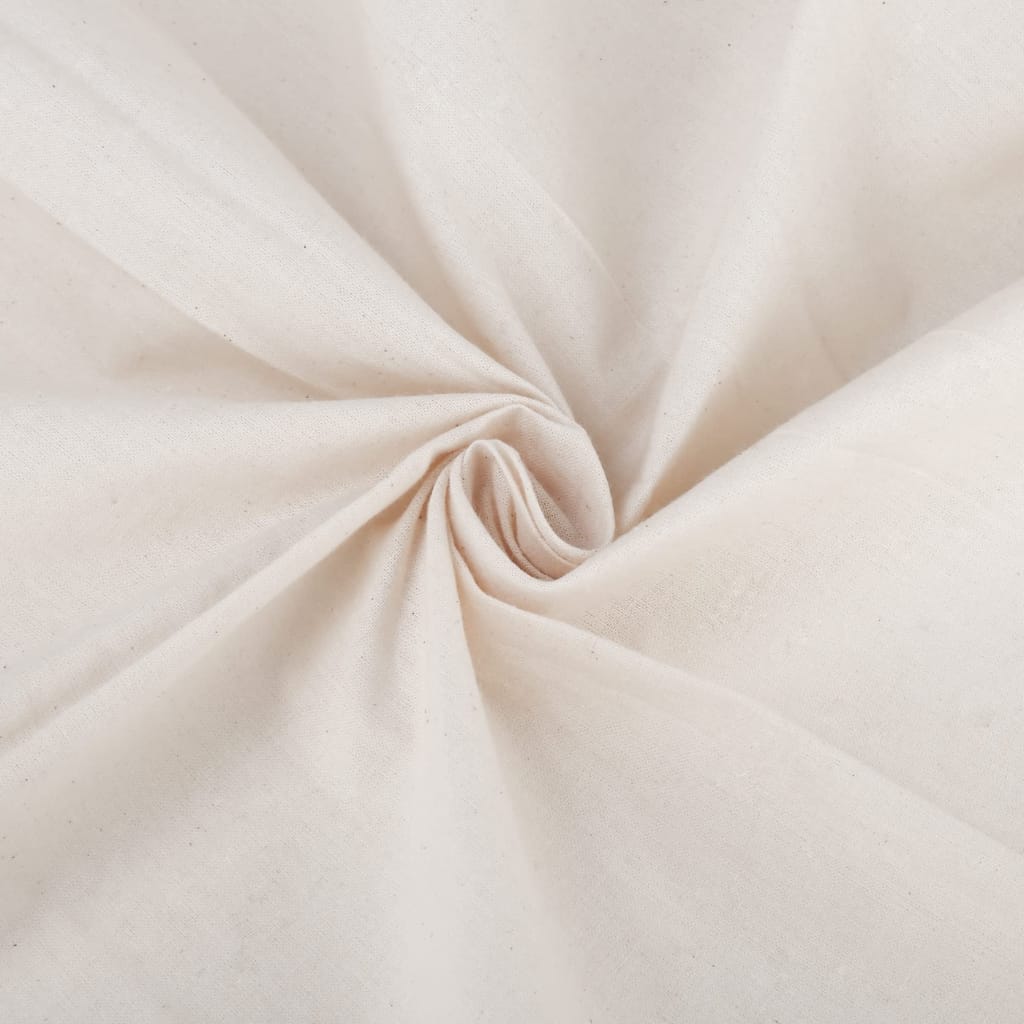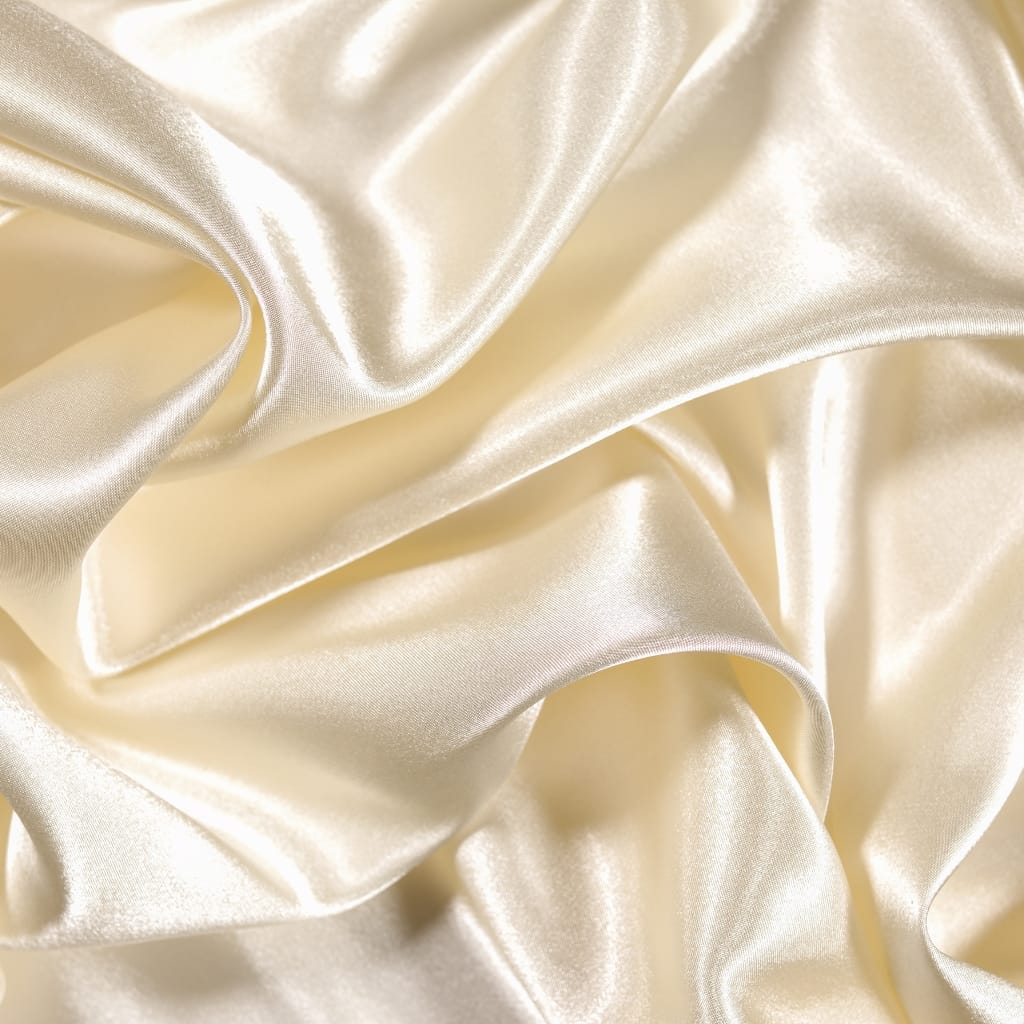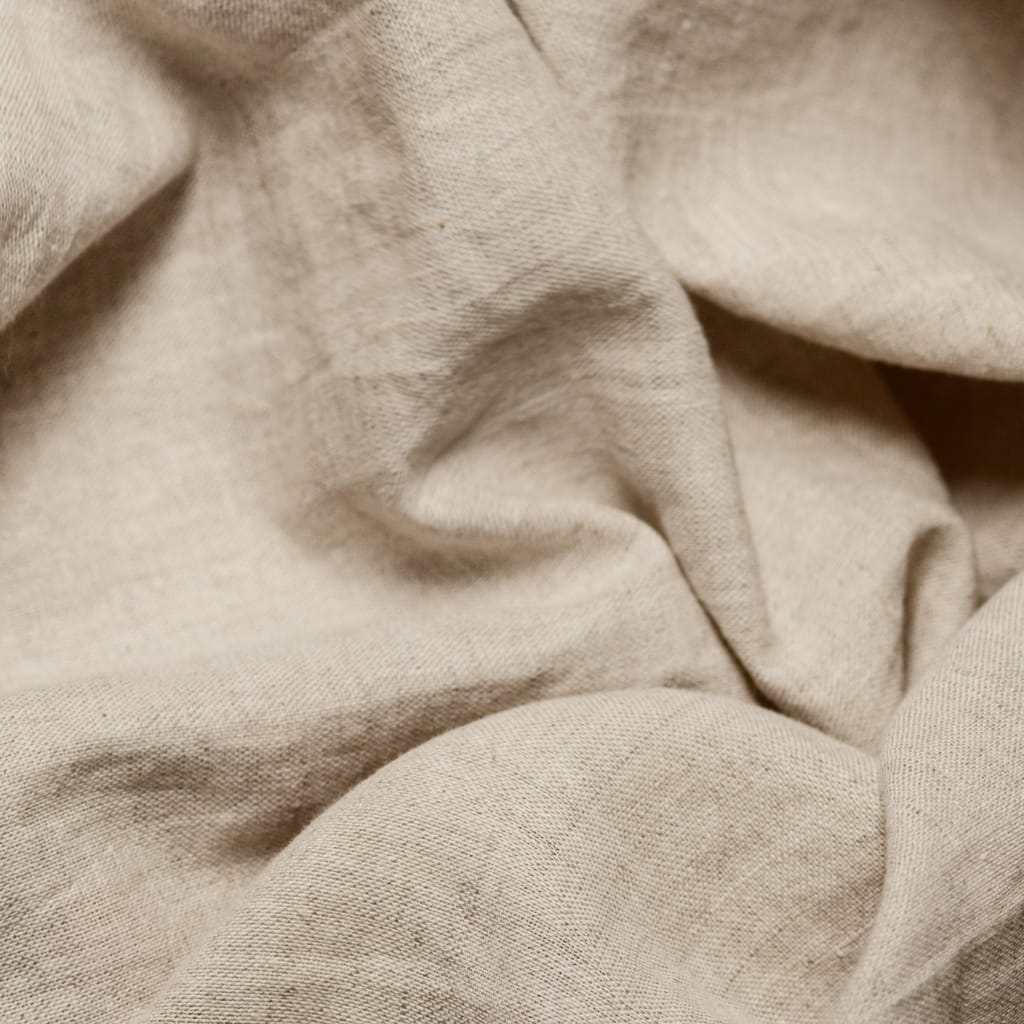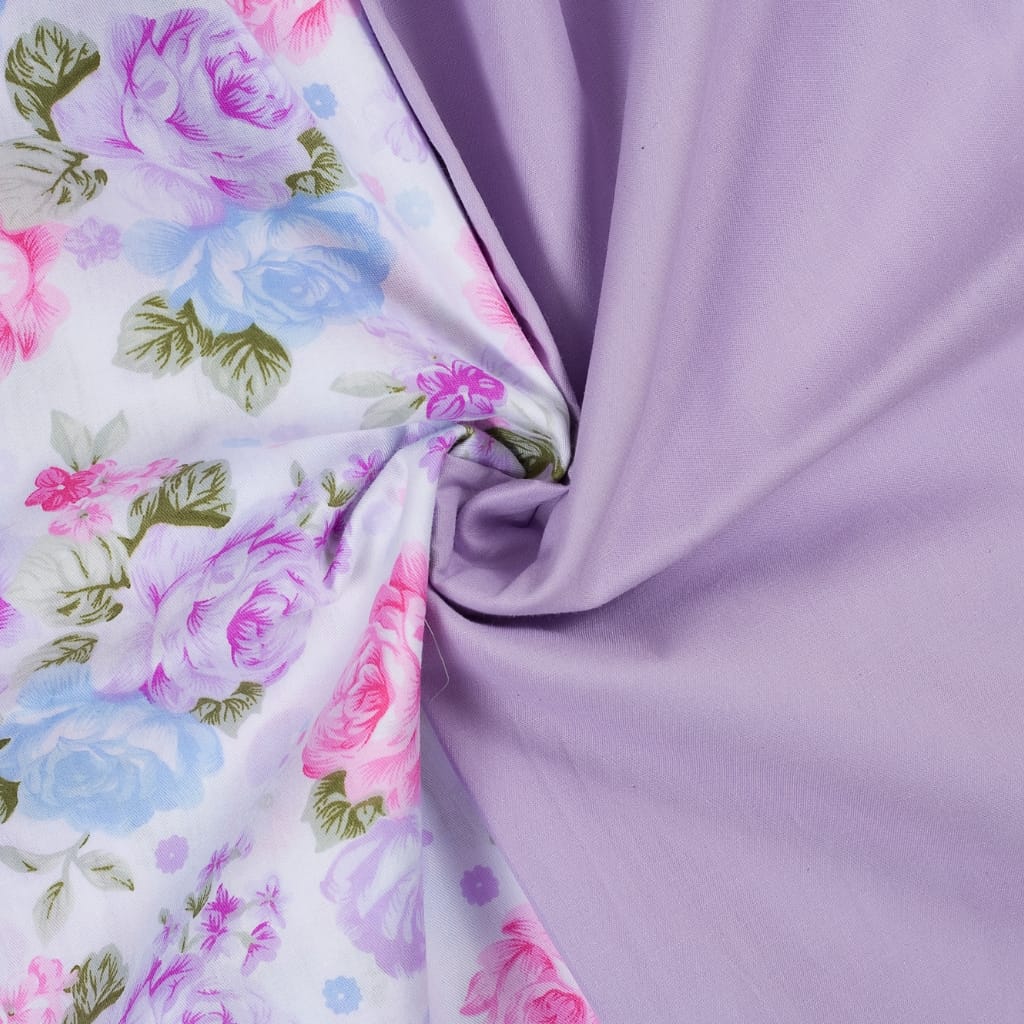Fabrics have a big impact on comfort level throughout the day. Most people would ask the question thin cotton material vs linen: which fabric wins for comfort. These fabrics are well loved for being light and easy to wear. Still, comfort is more than breathability. Several factors come into play such as feel, how the skin interacts with the fabric, how moisture is maintained, and the strength of the fabric. In this guide, we’ll analyze the pros and cons of each fabric. Let’s figure out which one wins the comfort crown.
Table of contents
- What Exactly Is Thin Cotton Material?
- Getting to Know Linen: Nature’s Cooling Material
- Breathability Showdown: Which One Keeps You Cooler?
- Skin Touch and Softness: Comfort Starts Upon First Wear
- Absorbent Capabilities: Staying Dry When Active
- Analysis of Fabric and its Durability
- Assessment of degree of wrinkles present on the fabric. Which fabric irons better for longer?
- Sensation Consideration: Allergy and Irritation
- Sustainability: Which Fabric is the Most Eco-Friendly?
- Expenses: Price and Value
- Styling Cotton and Linen: Fashion’s Two Wonders
- Weather Based Fabric Performance
- Travel Suitability: Lightweight and Easy to Carry Everywhere
- Color Longevity: Which Fabric Maintainsits Radiance Longer?
- Shrinkers:
- ULTIMATE CONFORT DECISION: THIN COTTON VS. LINEN
- Final Judgment: What Feels Best For You
- FAQs
What Exactly Is Thin Cotton Material?

Thin cotton material is cotton fibers woven together to form a light and airy fabric. Like its name indicates, thin cotton material is a soft, breathable, and lightweight fabric. It is preferred in hot areas as it helps in regulating body temperature. Thin cotton material is one of the most popular fabrics for daily wear by most women. It is used for shirts and bed linens too.
Getting to Know Linen: Nature’s Cooling Material
Linen is produced from the fibers of the flax plant. Throughout history it has been appreciated for its strength and natural grain. Compared to thin cotton material, soft linen starts out a bit rough. However, linen becomes cozier over time. Its open weave and sturdy fibers allow air to pass through easily, which allows it to soften with every wash. This quality makes linen incredibly cool, especially in humid climates. People wear love the rustic character and comfort of breathable linen, even if it creases more readily.
Breathability Showdown: Which One Keeps You Cooler?
In the summer wearing something cool is essential which is why getting a fabric correctly suited for the their heat is super important. When the heat is on, the skin needs a gentle fabric that hallow air to flow. Cotton’s less coarse fabric does a great job at allowing air to flow, it reduces the “sweaty feel” and becomes more bearable to wear for the person. Although, linen does a step further, as it breathes far more efficiently. If you’re in a tropical climate, linen might win over cotton for giving comfort, although both materials are great in high temperatures.
Skin Touch and Softness: Comfort Starts Upon First Wear
The first consideration for comfort is the fabric’s ability to caress one’s skin. Soft cotton material is smooth from the very beginning. It is soft and increases body temperature readily. For this reason, many people with sensitive skin prefer cotton over other materials. On the other hand, most people feel rough linen for the first few wears. With frequent washing, however, it becomes less pleasant but softer. While linen comes to possess coziness with time, cotton provides immediate comfort. It is thin cotton material has won most for softness from day one.
Absorbent Capabilities: Staying Dry When Active
Feeling dry during workout sessions or hot days is essential for comfort. The material of thin cotton absorbs moisture quickly and detention of it can feel cooling at first. Unfortunately, the feeling turns into dampness with too much moisture retention. Moisture absorbed by linen is released quickly and that moisture detention makes the fabric dry, keeping skin dry for longer periods. Thus, individuals who sweat heavily and live in a region with high humidity may find linen more suitable to manage sweats. Both materials work fine under moderate activity levels.
Analysis of Fabric and its Durability

One of the impactful details of comfort of a given fabric is its durability: its comfort value. The softness and breathability of thin cotton material, however, has a downside. It tends to get worn out with constant washing. It can fade, pill, or thin over time. Linen is strong Fibrer kind of fabric which actually improves with age. It offers better resistance to tearing while holding its shape for longer. If you are investing in clothing or bedding that will not easily spoil, linen is the better choice. But with gentle care, cotton doesn’t spoil easily as well. Their washing habits will determine tarnishing.
Assessment of degree of wrinkles present on the fabric. Which fabric irons better for longer?
Many people prefer not to wear clothes with wrinkles unless of cause that is the style of choice. A blush and soft touch sure compliments ones appearance. But scratches and creases on any kind of a garment completely ruin the appearance. Thorn of a Attire is Pretty Branched: People are particular about how the clothes they wear look. When vouching for wrinkle-free cotton poly blends, its best served cool. Ladies version of griddle wrinkle resistant shirts have no substitute. Very soft linen fabric is pretty but has terrible wrinkle resistance. Wrinkled linen cloth is popular look, but what about freshly ironed linen cloth?Comfort Care: Maintenance and Cleaning Instructions
Fabric care is important for overall comfort and performance. for example, most people can machine wash and dry thin cotton material on a low setting. However, it may shrink if not put in the dryer properly. Linen requires a more delicate touch. It should be washed by hand or on a gentle cycle, and air dried to maintain its delicate fibers. While caring for linen does require some extra attention, it is worth it. In all options of clothing, proper care allows one to retain comfort and extend the possibility of using the garment.
Sensation Consideration: Allergy and Irritation
Those who have sensitive skin often have a drastic reaction to the fabric type; The same goes for people who have sensitive skin. Thin cotton material has hypoallergenic properties which ensures that irritation does not occur. It’s ideal for frequent allergy suffers or those with skin conditions. Eczema and enharmonic patients benfit mostly from cotton’s smooth surface. Linen also ranks high for natural comfort but its coarse texture can be mildly irritating. However, once the fabric is softened, linen turns friendly. Overall, if there is a need to instantly relieve discomfort from skin, thin cotton material will serve you best.
Sustainability: Which Fabric is the Most Eco-Friendly?
Modern shoppers prioritize sustainability, and choices regarding textiles have an impact. Cotton as a renewable resource is thin, biodegradable, and, unfortunately, heavily pesticide dependent. Organic cotton does mitigate impacts somewhat. But there is also linen, which is one of the most eco-friendly materials available. It requires fewer resources, water, and chemicals to produce. If you are concerned about the environment, it would be the better choice. Although, using organic cotton does lessen your impact to a great extent.
Expenses: Price and Value
Sustainability is important to many people, but it does not dictate a purchase by itself. Thin cotton material is the most accessible economically, so you’ll find it in almost every clothing store. This makes it budget-friendly. Linen is pricier due to its complex production process and durability. Yet, it lasts longer and gets softer over time. Thus, while the initial cost may be high, the long-term value is great. If you’re shopping on a budget, cotton offers more for less. For those willing to invest, linen provides lasting comfort.
Styling Cotton and Linen: Fashion’s Two Wonders

Thin cotton material and linen both excel in spring and summer wardrobes, but their strengths diverge. Thin cotton material shines with its soft drape, making it ideal for casual and semi-formal dresses, pants, and shirts. Its durability and classic look contribute to its widespread appeal. Linen, on the other hand, offers an elegant aesthetic, perfect for both chic outfits and stylish beachwear. While thin cotton material offers a polished look, linen exudes a soft, gentle charm, known for its breezy comfort and adaptability to various styles. Although both can be utilized to make straps, the distinction between their characteristics ultimately defines their individual roles in creating fashion masterpieces: cotton for reliable versatility, linen for breezy elegance. Thin cotton material and linen offer distinct advantages, making them both invaluable choices for warm-weather attire.
Weather Based Fabric Performance
Fashion does not only care about the design but also the region of area and the temperatures of the region. Provided you live near the equator, hot weather will get you ready for these beauties. Linen being so light and airy can be worn to help keep goregeous during spring summer days. Side note… the breezy aspect really keeps the appeal during thicker humid heat. Thus, getting more heat means linen stays one step ahead. Unlike most fabrics, both mand sought out cottons breathability paired alongside the lightness to heavy humidity really brings these two up a step above others spring and summer fabrics making them shine from the crowd. While layered clothing is boosted to popular during the winter season. For any colder climate folks, fleece and snow do not provide a multilayered delight.
Travel Suitability: Lightweight and Easy to Carry Everywhere
On every trip, lightweight and easy-to-manage clothing, stand out the most during the clothing selection process. While packing, thin cotton material is compact, light, easy to fold, and easy to wash while traveling, as well. Hence, a suitcase full of textiles would not be a hassle. Additionally, linen also packs effortlessly, although it happens to wrinkle more and take its sweet time to dry. Due to its fast drying feature, it becomes quite helpful for travel in humid regions. For travelers who want wrinkle-free clothes, cotton is better. Despite that, linen’s breathability makes it a great companion for tropical destinations.
Color Longevity: Which Fabric Maintainsits Radiance Longer?
For anyone who wants their clothes to be well-taken care of or keep their vivid, bold, striking appeal for an extended period of time, color retention is a must capable feature. Its bold vibrant and catchy attributes are best shown using Thin cotton material holds dye very well. This part stays bright even after multiple washes. On the other hand, while linen is still good with dye, it tends to fade a tad faster due to it’s natural-fiber structure. Still, it gives a subtle, and charmingly worn-out look, perfect for casual attire. Thicker fabrics tend to serve better for bold colors and prints. However, bold colors can be hard to appreciate, but it depends on the individual’s taste.
Shrinkers:
Sizing That Lasts No one wants their clothes to shrink after spending money on them, and it is especially true for clothes made of thin cotton material that can shrink if washed in hot water or dried at high temperatures. Most cotton garments these days come with a pre-shrink guarantee; it’s to protect the consumer. Linen, too, shrinks — especially under high temperatures. Reading care labels and following washing instructions is the best course of action: using cold water and air drying when possible will help both fabrics retain their appearance and fit. Comfort also requires considering how a fabric behaves on your body. Thin cotton material is naturally low in static, as it does not cling to the skin, which is a major advantage during dry spell. Linen behaves the same way, although it may cling a little more under certain conditions. When compared to other fabrics, both cotton and linen are superior when it comes to avoiding clingy discomfort. They help you remain comfortably relaxed and itch-free throughout the day.
ULTIMATE CONFORT DECISION: THIN COTTON VS. LINEN

Using linen and thin cotton fabric, which one feels more comfortable? The answer seems to depend on your definition of ‘comfort’ comfort. Cotton beats Linen in skin-friendliness, softness, and its abundance. It would be the most suitable for sensitive skin and for wear in general. On the other hand, linen wins in airy softness, getting rid of moisture along with long-term sturdiness. If you are from a humid and hot region, then surely, linen would serve you better. There is comfort in both fabrics, but in different approaches.
Final Judgment: What Feels Best For You
It can be said that choosing between thin cotton material and linen is heavily relies on personal preferences and needs. For those of you who prefer instantly softness and affordability, then cotton would be a better option. For someone who prefers cool, durable materials that become softer with time, linen would better serve their needs. It does not matter where the emphasis lies with softness, style, or durability, there is something worth having in each fabric. Having goals and lifestyle around comfort enable comfort. It is thus suggested to use both fabrics and see which one better aligns with your comfort goals.
FAQs
Thin cotton is made from fine threads of the cotton plant and feels soft and smooth. Linen is made from the flax plant and has a textured, breathable feel. The key difference lies in their structure, moisture-wicking ability, and temperature regulation.
Linen is generally more breathable than thin cotton due to its looser weave and moisture-wicking properties. This makes it ideal for hot, humid climates.
Thin cotton is usually softer to the touch initially, making it ideal for sensitive skin. Linen softens over time with washing but starts off feeling stiffer.


